Subtotal: £84.18
6 X Glass Bloodfin Tetras – Prionobrama Filigera – South American Tetras (6), Beautiful Schooling Fish for Peaceful Community Tanks, Easy Care Tips for Vibrant Aquarium Life
£15.99 Original price was: £15.99.£13.55Current price is: £13.55.
Welcome these beautiful 6 X Glass Bloodfin Tetras – Prionobrama Filigera into your aquarium for a vibrant splash of color. These peaceful community fish thrive in schools and enhance any aquatic environment. Perfect for aquarists seeking lively, colorful fish to elevate their tank’s beauty.
995 in stock
Species Introduction
The Glass Bloodfin Tetra, scientifically known as Prionobrama filigera, is a captivating species that hails from the freshwater rivers and streams of South America. This vibrant fish is a member of the Characidae family and is often recognized for its striking appearance and lively behavior. These small schooling fish typically reach a maximum length of 4 cm (approximately 1.6 inches), making them an ideal choice for community tanks. Their transparent bodies, adorned with shimmering red fins, create a stunning visual display in any aquarium setting. The Glass Bloodfin Tetra thrives in well-planted environments, where they can exhibit their natural schooling behavior and enjoy the company of their aquatic companions. Understanding their natural habitat is crucial for providing a suitable environment that mimics their native waters, ensuring their health and happiness in captivity.
Care Requirements Dashboard
Essential Care Guide for Your 6 X Glass Bloodfin Tetras – Prionobrama Filigera
| Optimal Living Conditions | |
|---|---|
| Water Temperature | 24-27°C (75-81°F) |
| pH Level | 6.5-7.5 |
| Water Hardness | 4-12 dKH |
| Minimum Tank Size | 80L (20 gal) |
| Salinity | Freshwater |
| Care Level | Beginner Friendly |
Caring for Glass Bloodfin Tetras is relatively straightforward, making them an excellent choice for both beginners and experienced aquarists alike. These fish thrive in a well-maintained aquarium that mimics their natural habitat. A minimum tank size of 20 gallons is recommended to provide ample swimming space for a school of these lively fish. Maintaining water parameters within the ideal range is crucial for their overall health; they prefer a temperature between 22-28°C (72-82°F), a pH level between 6.0-7.5, and a hardness of 4-12 dGH. Regular water changes, along with proper filtration, will help ensure a clean and stable environment for your aquatic friends.
Natural Behavior & Temperament
Glass Bloodfin Tetras are known for their peaceful and social nature, making them an excellent addition to community tanks. In their natural habitat, these fish exhibit schooling behavior, which is essential for their well-being. They feel more secure and display more vibrant colors when kept in groups of at least six individuals. Their natural swimming patterns involve darting around the tank, often in a synchronized manner, creating a mesmerizing display for observers. While they are generally non-aggressive, it’s important to monitor their interactions with other species to ensure a harmonious environment. These fish thrive in environments that provide plenty of hiding spots and open swimming areas, allowing them to exhibit their natural behaviors while feeling secure.
Tank Setup Guide
Creating an ideal environment for your Glass Bloodfin Tetras involves careful consideration of tank setup. Start with a minimum tank size of 20 gallons, equipped with a reliable filtration system to maintain water quality. The substrate can be fine gravel or sand, which mimics their natural riverbed habitat. Incorporate plenty of live plants, such as Java Fern and Anubias, to provide hiding spots and create a natural feel. Additionally, adding driftwood and rocks can enhance the aesthetic appeal while offering shelter. Ensure that there are open swimming spaces to accommodate their active nature. Proper lighting is essential; aim for moderate lighting to promote plant growth while allowing the fish to feel secure. Regular maintenance, including water changes and plant trimming, will help maintain a healthy environment for your aquatic companions.
Water Quality Management
✓ Good Water Quality is Essential
pH Level: 6.0-7.5
Temperature: 22-28°C (72-82°F)
Hardness: 4-12 dGH
Maintaining optimal water quality is paramount for the health of your Glass Bloodfin Tetras. Regular water testing is recommended to ensure that pH levels remain between 6.0 and 7.5, with a temperature range of 22-28°C (72-82°F). Water hardness should be kept between 4-12 dGH to mimic their natural habitat. Conducting regular water changes—approximately 25% weekly—will help remove toxins and replenish essential minerals. Additionally, a high-quality filtration system is necessary to keep the water clean and clear. Monitoring ammonia, nitrite, and nitrate levels is crucial; ammonia and nitrite should remain at 0 ppm, while nitrates should be kept below 20 ppm. Implementing these practices will create a thriving environment for your aquatic friends.
Feeding & Nutrition
✓ Balanced Diet for Optimal Health
Diet: Flake food, micro-pellets, live or frozen foods
Feeding Schedule: 2-3 times daily
Feeding your Glass Bloodfin Tetras a balanced diet is essential for their growth and overall health. These fish thrive on a varied diet that includes high-quality flake food, micro-pellets, and occasional live or frozen foods such as brine shrimp or daphnia. It is recommended to feed them 2-3 times daily, providing only as much food as they can consume within a few minutes to prevent overfeeding and maintain water quality. Observing their feeding habits can also provide insights into their health; healthy fish will display vibrant colors and active behavior during feeding times. Supplementing their diet with spirulina or other algae-based foods can enhance coloration and promote overall vitality.
Compatibility Guide
✓ Ideal Tank Mates for Peaceful Community Tanks
Compatible Fish Species: Neon Tetras, Corydoras, Guppies, Rasboras
Glass Bloodfin Tetras are known for their peaceful nature, making them excellent candidates for community tanks. They can coexist harmoniously with a variety of compatible fish species, including Neon Tetras, Corydoras, Guppies, and Rasboras. When selecting tank mates, it is essential to avoid aggressive or overly large species that may intimidate or harm your tetras. Additionally, maintaining a proper school size of at least six individuals will help reduce stress and encourage natural schooling behavior. Observing the interactions among different species will provide insights into their compatibility and help ensure a peaceful aquarium environment.
Tank Mate Compatibility Guide
Great Tank Mates
- Other peaceful community fish
- Corydoras catfish
- Small tetras
- Peaceful dwarf shrimp
Avoid These Tank Mates
- Aggressive cichlids
- Large predatory fish
- Fin nippers
Compatibility Note: Always research specific species requirements and observe fish behavior when introducing new tank mates. Individual fish personalities can vary!
Health & Wellness
✓ Signs of Healthy Fish
Common Issues: Ich, fin rot, stress
Prevention: Regular water changes, healthy diet
Maintaining the health and wellness of your Glass Bloodfin Tetras involves regular monitoring and preventive care. Signs of healthy fish include vibrant colors, active swimming behavior, and a healthy appetite. However, like all fish, they can be susceptible to common issues such as Ich (white spot disease) and fin rot. To prevent these conditions, ensure that water quality is consistently high through regular water changes and proper filtration. Providing a balanced diet rich in nutrients will also support their immune system. If any signs of illness are observed, such as lethargy, loss of appetite, or visible lesions, it is crucial to take prompt action to isolate affected individuals and treat them accordingly.
Breeding Information
Breeding Glass Bloodfin Tetras can be a rewarding experience for aquarists. To encourage spawning, it is recommended to set up a separate breeding tank with soft, slightly acidic water and plenty of fine-leaved plants for the eggs to adhere to. Conditioning the breeding pair with high-quality live foods will help stimulate their reproductive behavior. During spawning, the female will scatter her eggs among the plants, and it is essential to remove the adults after spawning to prevent them from eating the eggs. The eggs typically hatch within 24-36 hours, and the fry will become free-swimming after about a week. Providing infusoria or finely crushed flake food will support their initial growth. As they grow, gradually introduce larger foods to ensure proper development.
Acclimation Process
✓ Proper Acclimation is Key
Acclimation Method: Drip acclimation or floating method
When introducing Glass Bloodfin Tetras to your aquarium, it is crucial to acclimate them properly to minimize stress and ensure a smooth transition. The drip acclimation method is highly recommended, as it allows for a gradual adjustment to the water parameters of the new tank. Begin by floating the sealed bag in the aquarium for about 15-20 minutes to equalize the temperature. Then, slowly add small amounts of tank water to the bag every 5-10 minutes for about an hour. After this period, gently release the fish into the aquarium, avoiding adding the bag water to the tank. This careful acclimation process will help your new aquatic companions adjust to their new home with minimal stress.
Long-term Care
Long-term care for Glass Bloodfin Tetras involves providing a stable environment that meets their needs throughout their lifespan. These fish typically live for 3-5 years in captivity, provided they are given proper care. Regular monitoring of water parameters, along with consistent feeding schedules, will help ensure their health. As they grow, it is essential to observe their behavior and interactions with other tank mates to ensure compatibility. Additionally, maintaining a clean tank through regular water changes and substrate cleaning will contribute to a healthy environment. Over time, you may notice changes in their coloration and behavior, which are normal as they mature. Always be prepared to adapt their care routine as needed to accommodate any changes in their health or environment.
Natural Habitat Recreation
✓ Mimicking Their Natural Environment
Biotope Setup: Soft substrate, dense vegetation, driftwood
Recreating the natural habitat of Glass Bloodfin Tetras within your aquarium can enhance their well-being and promote natural behaviors. To achieve this, focus on using a soft substrate, such as sand or fine gravel, which mimics the riverbeds they inhabit. Incorporate dense vegetation with live plants, providing hiding spots and shelter for the fish. Adding driftwood and rocks can further enhance the biotope, creating a more authentic environment. The use of natural materials not only improves the aesthetic appeal of the aquarium but also contributes to the overall health of the fish by providing them with areas to explore and establish territories.
Seasonal Care Adjustments
As seasons change, it is important to adjust the care routine for your Glass Bloodfin Tetras to ensure their continued health and happiness. In warmer months, monitor the water temperature closely, as higher temperatures can stress the fish. Consider using a fan or air conditioning to maintain stable temperatures. During colder months, ensure that the aquarium heater is functioning properly to keep the water within the preferred range. Additionally, adjust the lighting duration to mimic natural daylight cycles, promoting healthy plant growth and fish behavior. Regularly check for any signs of stress or illness, as changes in temperature and lighting can impact their well-being. By being proactive in your care routine, you can ensure that your aquatic companions thrive throughout the year.
Expert Tips
✓ Professional Advice for Optimal Care
Tip: Maintain a stable environment, observe behavior, and provide variety in diet.
To ensure the best care for your Glass Bloodfin Tetras, consider implementing the following expert tips. First, maintaining a stable environment is key; fluctuations in water parameters can lead to stress and health issues. Regularly monitor water quality and make adjustments as necessary. Second, observe the behavior of your fish closely; any changes in swimming patterns or feeding habits can indicate potential health problems. Lastly, providing a varied diet will keep your tetras healthy and vibrant. Incorporate different food types, including high-quality flakes, live foods, and algae-based supplements, to enhance their overall vitality and coloration. By following these expert tips, you can create a thriving environment for your aquatic companions.
Troubleshooting
Despite your best efforts, you may encounter challenges while caring for Glass Bloodfin Tetras. Common issues include stress, illness, and compatibility problems. If you notice signs of stress, such as hiding or erratic swimming, assess the tank environment for potential stressors, such as aggressive tank mates or poor water quality. If illness is suspected, isolate affected fish and consult with a knowledgeable aquarist or veterinarian for appropriate treatment options. Compatibility issues can arise if tank mates are not well-suited; always research potential companions before introducing them to your aquarium. By being proactive and attentive to your fish’s needs, you can effectively address any challenges that may arise.
Scientific Background
✓ Understanding Their Taxonomy and Conservation
Taxonomy: Family Characidae, Order Characiformes
The Glass Bloodfin Tetra is classified under the family Characidae and the order Characiformes. These fish play a vital role in their ecosystems, contributing to the biodiversity of freshwater habitats in South America. Unfortunately, like many freshwater species, they face threats from habitat destruction and pollution. Conservation efforts are essential to protect their natural environments and ensure their populations remain stable. As an aquarist, understanding the scientific background of your fish can deepen your appreciation for their beauty and importance in the ecosystem. By providing a suitable home for these fish, you contribute to their well-being and support conservation efforts indirectly.
Advanced Care Techniques
For experienced aquarists looking to provide exceptional care for Glass Bloodfin Tetras, consider implementing advanced techniques such as creating a biotope aquarium that closely resembles their natural habitat. This involves selecting appropriate plants, substrates, and decorations that mimic the conditions found in their native waters. Additionally, experimenting with different feeding strategies, such as incorporating live foods and varying the types of flakes or pellets, can enhance their health and coloration. Regularly engaging with your fish by observing their behavior and interactions can also provide valuable insights into their needs and preferences. By adopting these advanced care techniques, you can create an enriching environment that promotes the well-being of your aquatic companions.
Frequently Asked Questions
Q: What tank size is required for Bloodfin Tetras?
Bloodfin Tetras, being small and social fish, thrive best in a tank that is at least 60 litres. This allows them ample swimming space and reduces territorial disputes. A larger tank can accommodate a school of six or more, which is essential for their well-being, as they are shoaling fish. The tank should be well-planted with open swimming areas, and it is advisable to avoid overcrowding, as this can lead to stress and health issues. Regular water changes and a good filtration system are crucial in maintaining water quality in a tank of this size.
✓ Expert Tip
Consider adding floating plants to diffuse light and provide hiding spots, making them feel more secure.
Q: What water parameters do Bloodfin Tetras require?
Bloodfin Tetras prefer slightly acidic to neutral water, ideally with a pH range of 6.0 to 7.0. The temperature should be maintained between 22°C to 26°C, as they thrive in warmer waters. Regular testing of the water is essential to keep ammonia and nitrite levels at zero, with nitrates ideally below 20 ppm. Frequent water changes of about 10-15% weekly will help maintain these parameters, ensuring a healthy environment for your fish. Additionally, a well-cycled tank will provide stable conditions, which is crucial for their health and longevity.
✓ Expert Tip
Utilise a quality water conditioner to remove harmful substances from tap water before adding it to your tank.
Q: How often should I feed Bloodfin Tetras?
Bloodfin Tetras should be fed small amounts two to three times a day, only as much as they can consume in a few minutes. A varied diet is crucial for their health, including high-quality flake food, micro-pellets, and occasional live or frozen foods such as brine shrimp or daphnia. Overfeeding can lead to water quality issues and health problems, so it is important to monitor their intake. Regular feeding schedules help maintain their energy levels and vibrant colours, contributing to their overall well-being.
✓ Expert Tip
Consider using a high-quality colour-enhancing food to bring out the natural hues of your Bloodfin Tetras.
Q: What are the best tank mates for Bloodfin Tetras?
Bloodfin Tetras are generally peaceful and do well in community tanks. Suitable tank mates include other small, non-aggressive species such as Neon Tetras, Corydoras Catfish, and Guppies. It is advisable to avoid larger or more aggressive fish, as they may stress or prey on the Tetras. When introducing new tank mates, ensure the tank is adequately sized to prevent territorial disputes. Maintaining a balanced community will help create a harmonious environment, allowing your Bloodfin Tetras to thrive.
✓ Expert Tip
Always introduce new fish gradually and monitor interactions closely for signs of aggression or stress.
Q: How do I properly acclimatise Bloodfin Tetras to my aquarium?
Acclimatisation is crucial for the health of your Bloodfin Tetras. Begin by floating the sealed bag in your aquarium for about 15-20 minutes to equalise the temperature. Next, gradually introduce small amounts of tank water into the bag over the next hour, allowing the fish to adapt to the new water parameters. After this, gently transfer the Tetras into the tank using a net to avoid adding bag water, which may contain harmful substances. This method ensures a smoother transition, reducing stress and the risk of shock.
✓ Expert Tip
Keep the aquarium lights dimmed during acclimatisation to help reduce stress for your new fish friends.
Q: What are the signs of healthy Bloodfin Tetras?
Healthy Bloodfin Tetras exhibit vibrant colours, clear eyes, and active swimming behaviour. They should be social, swimming in groups and interacting with their environment. Signs of distress or illness include lethargy, loss of colour, clamped fins, or unusual swimming patterns. Regular observation is key, as early detection of health issues can make a significant difference. Additionally, maintaining optimal water conditions and a balanced diet will support their health and longevity, allowing you to enjoy their lively presence in your aquarium.
✓ Expert Tip
Perform regular water tests to monitor parameters, as maintaining a stable environment is crucial for their health.
Q: How do I successfully breed Bloodfin Tetras?
Breeding Bloodfin Tetras can be a rewarding experience. To encourage breeding, provide a separate breeding tank with soft, slightly acidic water and plenty of fine-leaved plants for the eggs to adhere to. The temperature should be raised to around 26°C. Introduce a pair of mature Tetras, as they will engage in courtship behaviour. Once spawning occurs, remove the parents after a few hours, as they may eat the eggs. The eggs typically hatch within 24-36 hours. Feed the fry with infusoria or finely crushed flake food once they are free-swimming.
✓ Expert Tip
Maintain excellent water quality in the breeding tank to ensure the fry’s survival and growth.
Q: What temperature should I maintain for Bloodfin Tetras?
The ideal temperature for Bloodfin Tetras is between 22°C to 26°C. Maintaining this temperature range is crucial for their metabolism, growth, and overall health. Sudden fluctuations in temperature should be avoided, as they can induce stress and lead to health issues. A reliable aquarium heater and thermometer will help in achieving and maintaining stable conditions. Regular monitoring of the temperature will ensure your Tetras remain active and exhibit their natural behaviour.
✓ Expert Tip
Consider using a heater with an adjustable thermostat for precise temperature control.
Q: How long do Bloodfin Tetras typically live in captivity?
In captivity, Bloodfin Tetras can live for approximately 5 to 8 years, provided they are cared for in optimal conditions. This includes maintaining stable water parameters, a balanced diet, and a properly sized tank with suitable tank mates. Regular health checks and prompt action in case of any disease will also contribute to their longevity. By providing a secure and healthy environment, you can ensure that your Bloodfin Tetras thrive and live a fulfilling life.
✓ Expert Tip
Create a stable environment by regularly testing water parameters and performing necessary maintenance.
Q: What type of substrate is most suitable for Bloodfin Tetras?
Bloodfin Tetras are not particularly fussy about substrate, but a fine gravel or sand substrate is recommended. This type of substrate mimics their natural habitat and allows for easy digging without harming their delicate fins. Avoid sharp or coarse substrates, as these can cause injury. Additionally, a darker substrate can enhance the vibrant colours of the Tetras, making them more visually appealing. Regular vacuuming of the substrate will help maintain water quality by removing uneaten food and waste.
✓ Expert Tip
Adding plants can help to create a natural environment, providing hiding spots and reducing stress.
Q: What behavioural patterns should I expect from Bloodfin Tetras?
Bloodfin Tetras are active and social fish, often seen swimming in schools. They exhibit playful behaviour, darting through the water and exploring their surroundings. When kept in groups, they display more natural behaviours, including schooling and social interactions. They can sometimes be skittish, especially in new environments, so it’s important to provide plenty of hiding spots using plants and decorations. Observing their behaviour will also help you identify any signs of stress or illness, allowing you to take prompt action if necessary.
✓ Expert Tip
Ensure your tank is well-planted to provide a sense of security and promote natural behaviour.
Q: How can I prevent common diseases in Bloodfin Tetras?
Preventing diseases in Bloodfin Tetras involves maintaining optimal water quality and a stress-free environment. Regular water changes and testing for ammonia, nitrites, and nitrates are essential. Quarantine new fish before introducing them to the main tank to avoid introducing pathogens. A varied diet rich in nutrients will also support their immune system. Observing your fish daily for any changes in behaviour or appearance can help catch potential problems early, allowing for swift intervention.
✓ Expert Tip
Consider adding aquarium salt to the water in small amounts, as it can help prevent certain diseases.
Q: What lighting conditions do Bloodfin Tetras prefer?
Bloodfin Tetras thrive in moderate lighting conditions. Too much brightness can cause stress, so it is advisable to provide a balance between light and shaded areas in the tank. Using a combination of LED lights with a timer can help simulate a natural day-night cycle. Additionally, incorporating floating plants can diffuse light and create a more comfortable environment for these fish. Regularly changing the light duration to mimic natural conditions will also benefit their overall well-being.
✓ Expert Tip
Adjust the lighting to suit the plants in your tank as well, enhancing both the fish and plant health.
Q: How do I recognise stress in Bloodfin Tetras?
Signs of stress in Bloodfin Tetras can include hiding, loss of colour, erratic swimming patterns, and clamped fins. If they are frequently darting around the tank or staying in one spot, it may indicate discomfort. Environmental factors such as poor water quality, aggressive tank mates, or sudden changes in temperature can contribute to their stress. Immediate action should be taken to rectify the situation, including improving water conditions and ensuring a peaceful community. Regular observation is key to identifying these signs early.
✓ Expert Tip
Create hiding spots using plants and decorations to help your Tetras feel secure and reduce stress levels.
Q: What natural habitat conditions should I replicate for Bloodfin Tetras?
Bloodfin Tetras are native to the slow-moving rivers and floodplains of South America, where they inhabit densely vegetated areas. To replicate their natural habitat, provide a well-planted aquarium with plenty of hiding spots, using plants like Java moss and floating plants. The substrate should mimic the soft, slightly acidic waters they prefer. Additionally, using driftwood and leaf litter will enhance the natural aesthetic and help maintain water quality. Maintaining warm, stable temperatures and good water flow will also contribute to their well-being.
✓ Expert Tip
Using a water conditioner that mimics natural river conditions can further enhance their living environment.

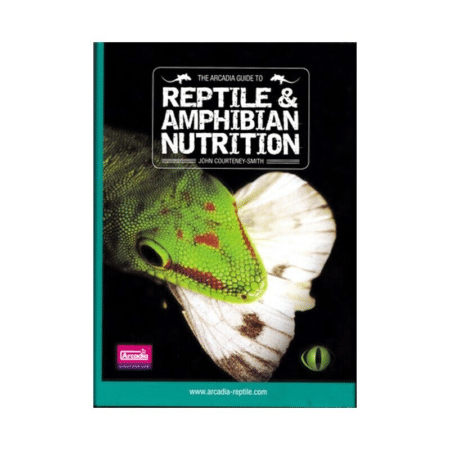
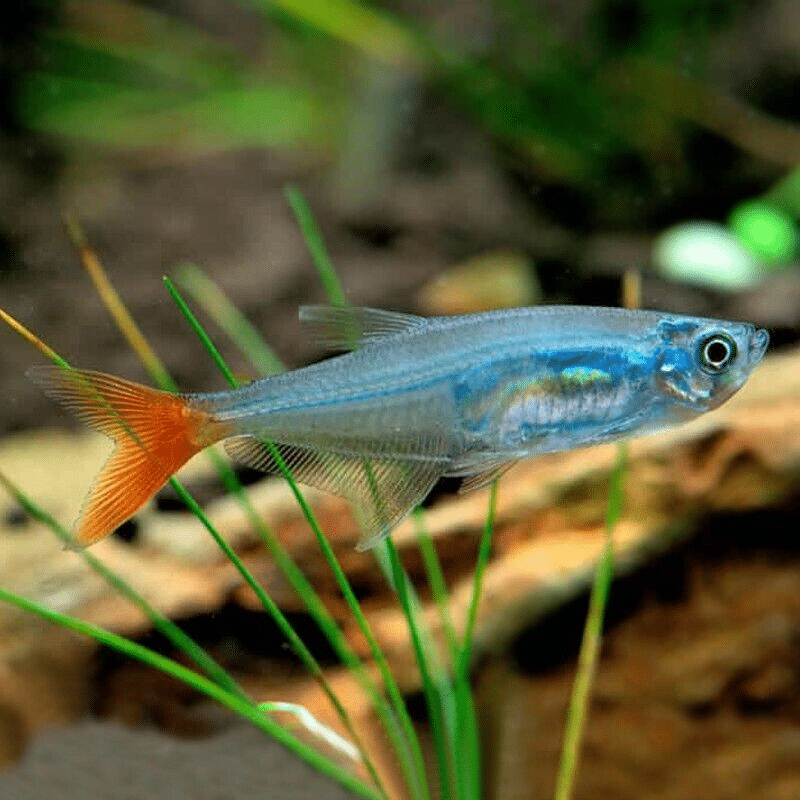
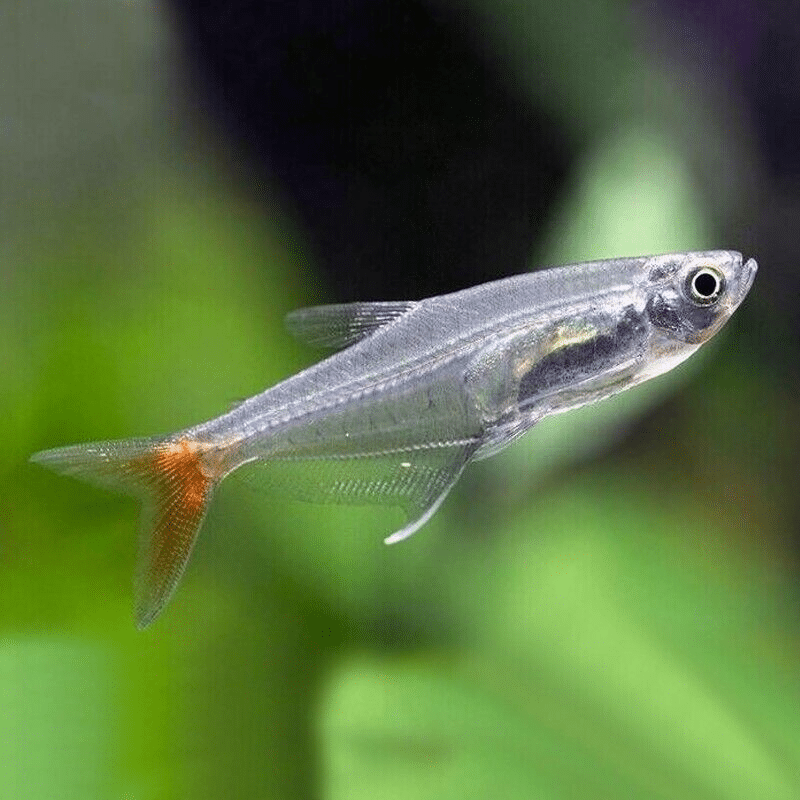


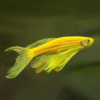
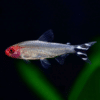

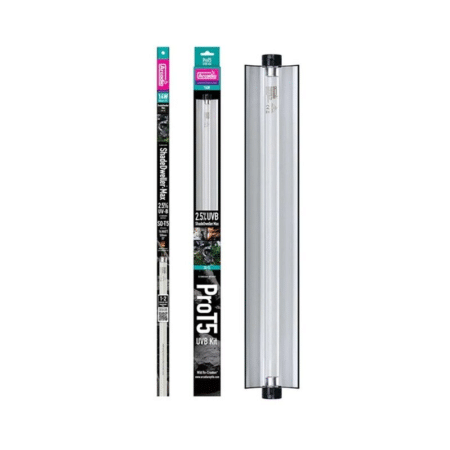
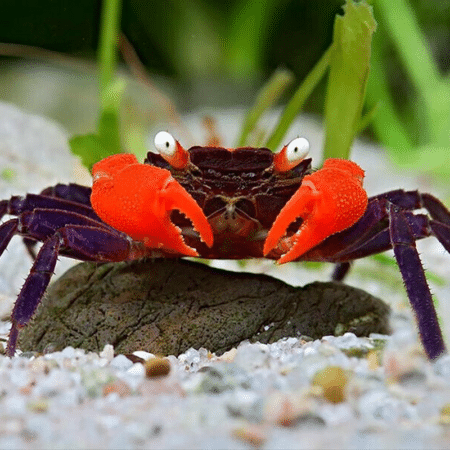

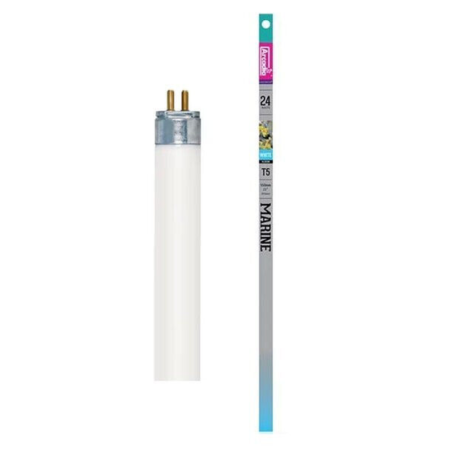

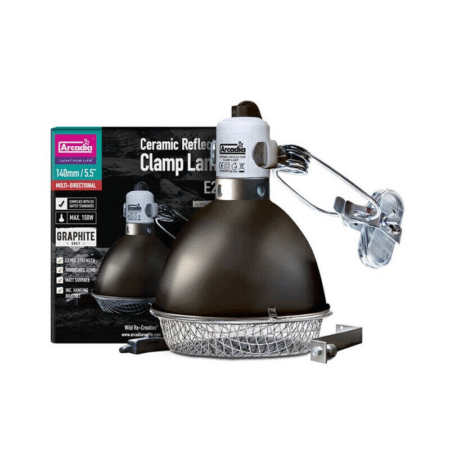
Emily Carter (verified owner) –
I recently added the 6 Glass Bloodfin Tetras to my 20-gallon aquarium, and I couldn’t be happier! These little gems are not just stunning to look at, but they also bring such liveliness to the tank. After about two weeks, they settled in beautifully, showcasing their vibrant colors and playful nature. I’ve kept neon tetras in the past, but these Bloodfins have a charm all their own with their unique fin patterns and graceful swimming. They thrive in a well-planted environment, which I’ve enhanced with some real plants and driftwood to mimic their natural habitat.
While they’re generally peaceful, I’ve noticed they do best when kept in larger groups, as it helps reduce any timid behavior. A minor downside is that they can be a bit shy initially, so be patient during the acclimation period. Overall, I highly recommend these freshwater fish for both beginners and experienced aquarists looking to add a splash of activity and color to their setup. They are truly a joy to watch, and I can’t imagine my tank without them now!